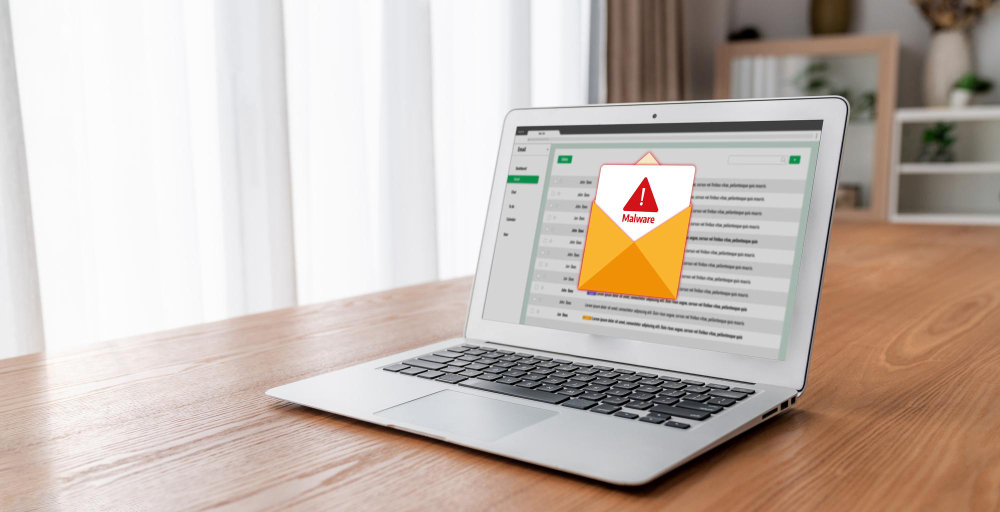Website owners must prioritize ethical link-building strategies as search engines become increasingly sophisticated in detecting and penalizing manipulative tactics. Here, we explore link manipulation from the basics to how to protect against this cybercrime.
Understanding Link Manipulation

Link manipulation is a sneaky way of creating links that look like the real thing but actually lead to malicious websites or app downloads.
This is a common tactic cybercriminals use to spread malware, steal personal information, or trick you into providing sensitive data such as passwords or credit card numbers.
How does Link Manipulation Work?

Here’s how link manipulation works:
- Covert Links: Cybercriminals make the link look like a trusted URL, such as from a bank or online shopping site. Apart from the URL looking similar, they also use logos with little difference from the original.
- Phishing emails: Another common method is to send victims an email that looks like it comes from a legitimate company. In general, the content of the email is to urge you to click on a link to update an account or confirm information.
- Malicious Ads: Finally, cyber criminals place fake ads on websites that, when clicked, take victims to malicious sites or download malware.
Types of Link Manipulation

There are several common types of link manipulation:
- Cloaking: This happens when someone hides the original content of a webpage from search engines. They show one thing to search engines to get higher rankings, but when you click on the link, you will see something completely different.
- Link Farming: someone creates many low-quality websites and links them to their main website to artificially boost its ranking.
- Link Scheming involves exchanging links with other websites to manipulate search engine rankings.
- Paid Links: This happens when someone pays for a link to their website, which is against many search engine guidelines.
Awareness of these tactics is important, as they can damage your website’s reputation and search engine rankings.
What are Examples of Link Manipulation?

Here are some common examples of link manipulation:
Phishing Attacks:
- Disguised Links: Cybercriminals often disguise malicious links to make them look like they are coming from legitimate sources, such as banks, social media platforms, or online shopping sites.
- Shortened URLs: They may use URL shorteners to hide the true purpose of a link, making it difficult for victims to identify potential threats.
Search Engine Optimisation (SEO) Black Hat Tactics:
- Cloaking: Presenting different content to search engines and users. Search engines see high-quality content to rank websites higher, while users see low-quality or irrelevant content.
- Link Farms: Creating a network of low-quality websites to link to the main webpage artificially boosts its ranking.
- Paid Links: Buying or selling links to manipulate search engine rankings.
- Link Scheming: Exchanging links with other websites to boost search engine rankings.
Other examples:
- Hidden Text and Links: Placing text or links on a page that are invisible to users, but visible to search engines.
- Keyword Stuffing: Overusing keywords in content to manipulate search engine rankings.
The Impact of Link Manipulation on Search Engine Rankings

Link manipulation can significantly impact search engine rankings, both positive and negative.
Positive Impact (Short Term):
- Higher rankings: By artificially increasing the number of backlinks to a website, link manipulation can temporarily improve rankings in search engines.
- Increased Traffic: Higher rankings can increase organic traffic to a website.
Negative Impact (Long Term):
- Penalties from Search Engines: Search engines like Google have sophisticated algorithms to detect and penalize websites that engage in link manipulation. This can result in a website experiencing a drop in rankings, traffic, or even removal from the search engine.
- Damaged reputation: Using these tactics can damage a website’s reputation and credibility.
- Security Risks: Some link manipulation techniques, such as buying links from low-quality websites, can expose your website to security risks such as hacking and malware.
How can you Protect Against Link Manipulation?

Validate User Input
Always verify to prevent sending malicious links. This includes checking for suspicious characters, patterns, or URLs. You can significantly reduce the risk of link manipulation attacks by filtering out malicious input.
Use URL Encoding
URL encoding is a technique that converts special characters into a format that can be safely transmitted over the internet. Properly encoding URLs can reduce the risk of malicious links being injected into your system.
Implement a Whitelist
Creating a whitelist of trusted websites can help protect against link manipulation. Only allowing links from approved sources can significantly reduce the chances of users being redirected to malicious websites.
Regular Security Audits
Conduct regular security audits to identify and address potential vulnerabilities in your website or application. This includes scanning for outdated software, weak passwords, and other security risks attackers can exploit.
Frequently Asked Questions
How can I secure my application against link manipulation attacks?
Implement robust input validation and output encoding techniques to protect your application from link manipulation attacks. This ensures that user-supplied data is sanitized and displayed safely, preventing malicious code injection and unauthorized actions.
What is the role of whitelisting in preventing link manipulation?
Allowlisting is a security measure by restricting user input to a predefined set of trusted values. This prevents attackers from injecting malicious links or code, significantly reducing the risk of successful link manipulation attacks.
What is link manipulation dom-based?
DOM-based link manipulation occurs when an attacker tricks a user into clicking a malicious link that modifies the behavior of a website’s JavaScript code. This can lead to various attacks, including redirecting users to phishing sites or stealing sensitive information.
Conclusion
Link manipulation attacks are becoming increasingly sophisticated, posing a significant threat to both individuals and organizations. By understanding the various techniques used by attackers, implementing strong security practices, and staying informed about the latest threats, you can effectively protect yourself from these attacks.
But is your online presence truly secure? To ensure the highest level of protection, consider partnering with a cybersecurity expert. Fluxgate offers a range of advanced security solutions to safeguard your digital assets. Contact Fluxgate today to learn how they can help you stay safe in the ever-evolving digital landscape.
